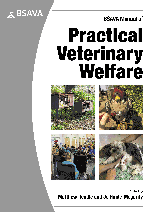
Full text loading...

The basic concept of One Health is that the health of people, animals and the environment are intrinsically linked at a local, national and global level. It is a concept that has gained momentum in recent years, owing to the impact of a rapidly growing human population, accelerating changes to the ecosystem, and the growing number of emerging and re-emerging infectious diseases. This chapter discusses many aspects and issues of global One Health, including the human–animal bond, shared health issues, animals as sentinels, the exotic pet trade and animal-assisted interventions.
One Health, Page 1 of 1
< Previous page | Next page > /docserver/preview/fulltext/10.22233/9781910443798/BSAVA_Manual_Welfare_1_9781910443798.9.209-229-1.gif

Full text loading...














